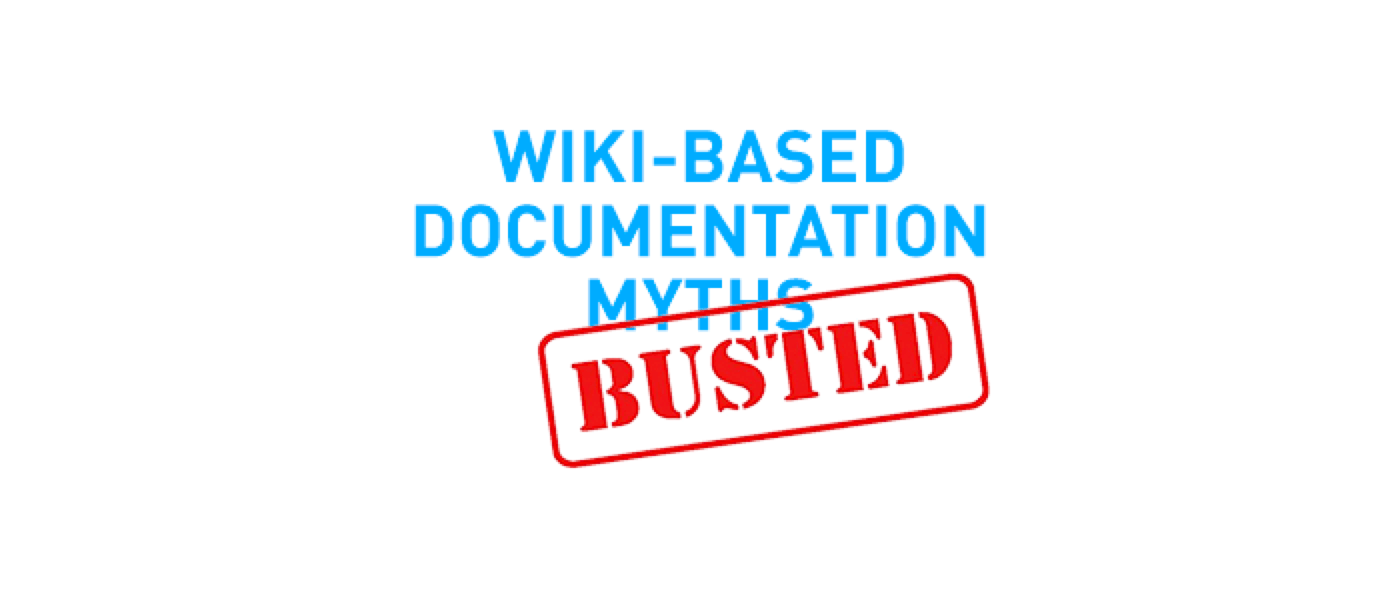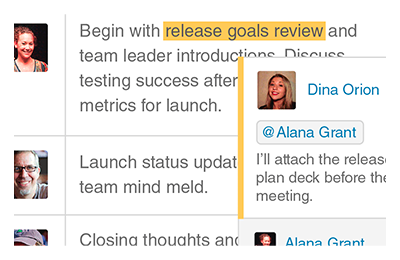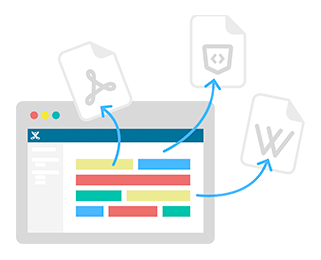7 Wiki-Based Documentation Myths Busted
|
hideNewsletterSignup |
true |
|---|---|
|
teaserImage |

|
|
teaserText |
For many companies – including Nintendo, BMW, Moody's and Lufthansajust to name a few – Atlassian Confluence is the platform of choice for documentation. Yet while this wiki-based approach to technical content is gaining popularity by leaps and bounds, there are still plenty of misconceptions floating around on the web about tech doc wikis. |
|
lang_de |
https://www.k15t.de/blog/2017/03/wiki-basierte-dokumentation-7+1-mythos-unter-der-lupe |
For many companies – including Nintendo, BMW, Moody's and Lufthansa just to name a few – Atlassian Confluence is the platform of choice for documentation. Yet while this wiki-based approach to technical content is gaining popularity by leaps and bounds, there are still plenty of misconceptions floating around on the web about tech doc wikis.
One example we've run across recently is this ebook by the maker of a content platform that competes with wiki-based solutions. The article provides an overview of seven perceived deal-breakers when considering a wiki for documentation.
We're here to debunk and myth-bust them all. We're calling them myths because each blocker listed in the ebook can be cleanly solved by using a combination of Confluence and Scroll add-ons. If you're wrestling with the same questions in your organization that are raised below, please allow us to shed some light on the subject:
#1 Lack of Version Control
The lack of version control in basic wikis certainly is a challenge, but it's one that is handily overcome with Confluence enhanced by Scroll Versions. This powerful combo removes the "major problems regarding document identification, duplication, traceability, accuracy and clarity" noted in the article. Versions adds simple, intuitive functionality for version and variant management along with duplication of page titles in Confluence. Have a look at this Scroll Versions Crash Course Video to see exactly how it works.
#2 Lack of Structure
The article argues that it's virtually impossible to efficiently curate and tag content in wikis, and that ROT ("redundant, obsolete, and trivial") content will quickly crowd out the valuable content in a documentation wiki. Confluence provides all of the tools that companies need to effectively manage the quality and structure of their content, however, such as social sharing, comment discussions, page histories, and organizational tools. Confluence allows docs to come alive through a process of continuous feedback and improvement, and Scroll Versions and Scroll Translations add even more depth to these features to meet the needs of tech comm heavy lifting.
#3 Lack of Integration
What if an organization’s agents and reps need to access documentation in real time? With Confluence, there's an app for that. And a mobile-optimized web browser version as well. With Scroll Viewport, documentation can even be published to the web with clean, responsive, flexible styling. And being a true enterprise collaboration platform with a thriving add-on ecosystem, Confluence also offers a wealth of integration possibilities with other systems including Salesforce among many more.
#4 Lack of Localization
The ebook article posits that attempting to maintain localized content in multiple languages in a wiki is an exercise in futility. With Confluence and Scroll Translations however, it's quite straightforward. The combination of these solutions allows translation directly in Confluence, maintenance of multiple languages in a single space so content doesn't get spread all over the wiki, and integration with external translation management systems as needed.
#5 Lack of Flexibility
One of the key requirements for product documentation is the ability to publish to different formats easily. This is readily accomplished by teaming Confluence up with a range of Scroll Exporters as required. These add-ons let you export your Confluence content to HTML, Word, PDF, EPUB, DocBook, EclipseHelp, and CHM with full control over custom templates to style it precisely as needed. With the aforementioned Scroll Viewport add-on, you can even use Confluence as a platform to publish your content to the web and style it with HTML, CSS, and JavaScript.
#6 Lack of Security
The article states that wikis aren't designed to provide the security that is necessary when working with content that needs to be managed or restricted. The truth is that Atlassian Confluence is an enterprise solution that provides robust permission control. It offers precise settings for exactly what pieces of content can be accessed and edited by which users, and it wouldn't be used by the majority of the Fortune 100 if it didn't have these controls.
#7 Lack of Search Functionality
While it may be problematic to track down specific content in some more simplified wikis, one of the primary benefits of managing knowledge in Confluence is its powerful search engine. As users of modern content solutions have come to expect, finding what you need in Confluence is a matter of the few seconds it takes to type your query into the search bar at the top of any page. You can filter and view your results, and where they're located in the wiki, all at a glance.
Eyes Open to the Wiki Way
We're always surprised when we learn of those who hold the outdated notion that wikis are wild jungles overgrown with redundant content – where finding and extracting information in a useful format is either an uphill battle or downright impossible. This is quite simply not the case in modern times. Atlassian Confluence has changed the game, and K15t's Scroll add-ons provide all of the tools necessary to use it to execute a modern, agile approach to technical documentation.
Confluence is a thoroughly enterprise-proven collaboration platform, that not only manages knowledge for most of the Fortune 100, but also for thousands of other companies of all shapes and sizes. The Scroll add-ons add a wide range of additional functionality made specifically to help technical communicators keep pace with fast-moving teams and fast-changing products. Confluence and Scroll make the wiki-based approach not just suitable for documentation – they make it the ideal solution.


.png)